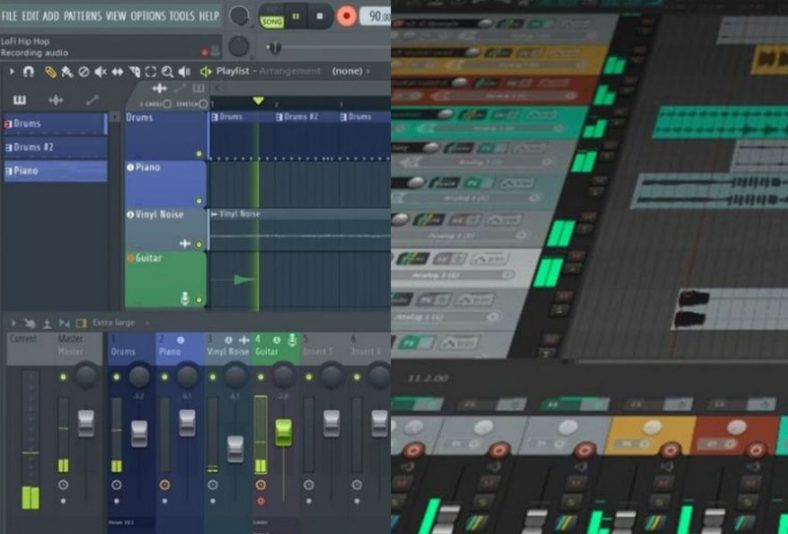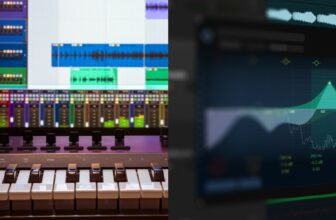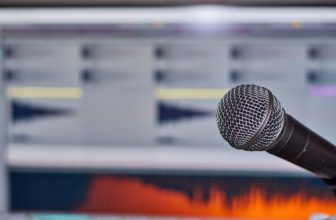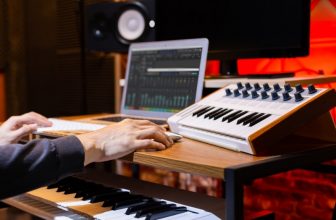Reaper vs FL Studio – Which is Better?

Reaper and FL Studio are popular Digital Audio Workstations among producers because of their low cost and studio-quality outcomes. Both are jam-packed with cutting-edge features. To know which one is superior, a more in-depth look is required.
A good Digital Audio Workstation is one of the most crucial investments any musician or producer can make because it is the most important tool used from beginning to end on any project.
Digital Audio Workstation is essential in all genres to provide you with the greatest possible quality, regardless of the genre of music you play or compose.
Two of the most popular Digital Audio Workstations on the market are Reaper and FL Studio. However, if you look closer at these Digital Audio Workstations, you will find that they have different workflows, which is exactly what we will be discussing today.
Contents
Key differences between Reaper and FL Studio
- FL Studio’s interface is more aesthetically pleasing than Reaper’s. Reaper’s default layout and interface are not great, and it can be difficult for some to get into the swing of things. That said, Reaper is highly customizable, you can easily get a theme you like online for free or just customize and make it yourself.
- Reaper is a DAW known for being lighter and more CPU efficient. It is one of the most CPU-efficient Digital Audio workstations on the market, making it an excellent alternative for novices and bedroom artists. FL Studio, on the other hand, is known to have trouble working on lower-end computers and lacks when compared to Reaper, despite being comparatively quite good on the CPU.
- FL Studio’s MIDI capabilities and piano roll functions are superior to Reaper’s. This is because FL Studio is geared toward electronic artists, which necessitates the inclusion of robust MIDI capabilities and features.
- FL Studio also offers free lifetime upgrades, which is a nice feature that keeps the overall cost low because you won’t have to pay every time your DAW gets a new version. This is not the case with Reaper, which only offers a limited number of free upgrades, requiring you to pay every time a new update is released.
- If you’re an electronic musician, FL Studio is a terrific choice because it’s built specifically for them. It’s also known to be used by a lot of electronic musicians before they transition to Ableton Live because of its superior live features.
- If you’re a studio or recording artist, producer, or engineer, Reaper might be a better option due to its excellent mixing features. Reaper’s interface is much more similar to Digital Audio Workstations used in studios, so you’ll feel at ease working with it.
- FL Studio comes with lots of plugins and instruments, all of which are of high quality. In comparison, Reaper’s default plugins and instruments are lacking. They do, however, sound slightly different from the ones that come with FL Studio.
- The excellent MIDI capabilities and user-friendly interface of FL Studio have made it one of the most popular tools among electronic musicians. On the other hand, Reaper’s affordability and extensive functionality have led many budget-conscious musicians and engineers to begin their careers with the software. The free tutorials on their website are an excellent complement.
Interface
When compared to Reaper’s default interface, FL Studio’s interface is better. Not that Reaper is incapable of doing its job. The default Reaper interface is not as appealing to the eye as FL Studio’s. Reaper, unlike FL Studio, has a highly customizable default interface.
The FL studio interface begins with a large timeline in the center of the screen where you may record all of your tracks and place samples to be modified or organized as needed. This timeline stretches to the screen’s far-right.
The software starts with a simple channel rack window where you may add tracks, instruments, or patterns that can then be programmed to create the sound you want. Moving your mouse left to the far left of the screen will bring up a browser window where you can search for patterns or loops to use in your creations.
In most cases, the mixer is not included in the window and must be opened individually from the controls at the very top of the screen. This control bar includes a plethora of options that can be accessed with a single click of a button.
Reaper, on the other hand, has a user interface that is more akin to that of conventional studio software, such as Pro Tools. It has a straightforward appearance. It includes a large timeline in the center of the screen that stretches to the far right.
To the left of the timeline is a track section with some basic track settings. The information panel at the bottom of the timeline displays all of the relevant information regarding the project’s length, tempo, and time signature, among other things.
Then, towards the bottom of the screen, you’ll find a fully functional mixer, which comes in helpful for mixing, mastering, and editing. A toolbar with basic controls can be found at the very top of the screen.
On the other hand, Reaper is quite nice because the program is extremely customizable, meaning you can make this interface seem like anything you want. There are also a variety of free themes to download and play with online, or you may create your own from scratch.
Hardware and Software Controllers
Most 3rd party hardware accessories are supported by both Reaper and FL Studio. The parent company’s hardware support is also outstanding.
Both Reaper and FL Studio enable multiple screens, so if you wish to extend your workflow across multiple monitors, you can do so, quickly and easily.
CPU Usage
Because of its simple user interface and process, Reaper has an advantage when it comes to CPU consumption. The program is also open-source, making it ideal for low-configuration workstations. This means that if you’re a newbie or don’t want to spend a lot of money on a high-end workstation, Reaper is a better option.
When it comes to CPU control, though, FL Studio is by no means bad. There’s a reason why many big artists enjoyed it when they couldn’t afford pricey workstations. However, in my opinion, it falls short when compared to Reaper.
It also depends on how software is used, as a songwriter, loop-based producer, or electronic producer may not require the majority of the heavier plugins that are known to consume a lot of CPU processing power. For this purpose, FL Studio will be a far superior option.
If you’re a typical producer or music engineer who’ll be mixing and mastering with these hefty plugins, I’d prefer Reaper.
Working with Audio
When it comes to dealing with audio, there are significant differences between FL Studio and Reaper. This is because their user interface is quite different, as described in the preceding section. This is mainly a matter of personal preference and the amount of time you devote to the software.
However, in my experience, working with audio on Reaper is slightly easier. This is attributable to the fact that the general interface of FL Studio is more difficult to use. In comparison, Reaper makes it easier to access the most crucial functionality.
Working with MIDI
When it comes to dealing with MIDI, there are a few things to keep in mind. FL Studio is far superior to Reaper. This is because FL Studio is more focused on loop-based production and electronic artists. It appeals to those creators more and becomes more popular by including a decent MIDI workflow.
When dealing with MIDI, Reaper is also pretty good, and you’ll get similar results when using it, but I’d give FL Studio the edge because of the UI and overall workflow.
Plugin Compatibility and Performance
Both FL Studio and Reaper perform admirably in terms of plugin compatibility. The majority of the plugins are supported by both applications and perform accordingly.
You will have a better workflow when working with plugins on Reaper because of its minimal CPU utilization, especially if you are working on a lower-end workstation. This only gets better when you’re using third-party plugins, which require more processing power than the Digital Audio Workstation’s default plugins.
This means that if you’re a music producer or engineer, Reaper will be a much better choice because you’ll be working with a lot of plugins at once.
Stock Instrument Plugins
When it comes to standard plugins, FL Studio offers more options than Reaper. This is also true in the case of stock instruments. In comparison to Reaper, FL studio has far better stock instruments. This makes it even more enticing to songwriters and electronic musicians who are looking for better stock sounds but don’t require low CPU utilization.
The stock instruments included with Reaper are substantially more basic and geared towards beginners. If you’re new to music production with instrument plugins, these instruments are ideal for learning, especially if you wish to work with loops.
It is not suited for music production with these instruments, however, because the overall sound quality is inferior to FL Studio, requiring you to work harder to obtain decent sound samples and disrupting your creative workflow.
OS Compatibility
When it comes to OS support, Reaper is more compatible in general. This is due to Reaper’s compatibility with LINUX, PC, and macOS. In comparison to FL Studio, which does not support LINUX, making it more OS-friendly.
Although the number of LINUX users is small, and most manufacturers and users prefer not to use it, it cannot be disregarded, and I must give Reaper the edge.
Verdict
To summarize, both Digital Audio Workstations are excellent for both beginners and advanced users. It is particularly appealing to newcomers due to its inexpensive price and the features you will receive for that price. This does not, however, imply that you will not receive industry-standard results. Most well-known producers and engineers got their start with these programs, and many well-known songs and music are produced using them as well.
They get an advantage over most industry standard Digital Audio Workstations due to their light design, as these industry-standard Digital Audio Workstations typically require high-end workstations and other hardware to perform to their full potential.
Your choice of Digital Audio Workstation may very well be influenced by the style of music you want to make. Electronic musicians prefer FL Studio, whereas producers and music engineers use Reaper, as I mentioned previously.
At the end of the day, it doesn’t matter which Digital Audio Workstation you use because the final output is entirely up to you, and a Digital Audio Workstation is just another tool among many that can assist you in quickly translating your ideas. Have a great time producing music!!





